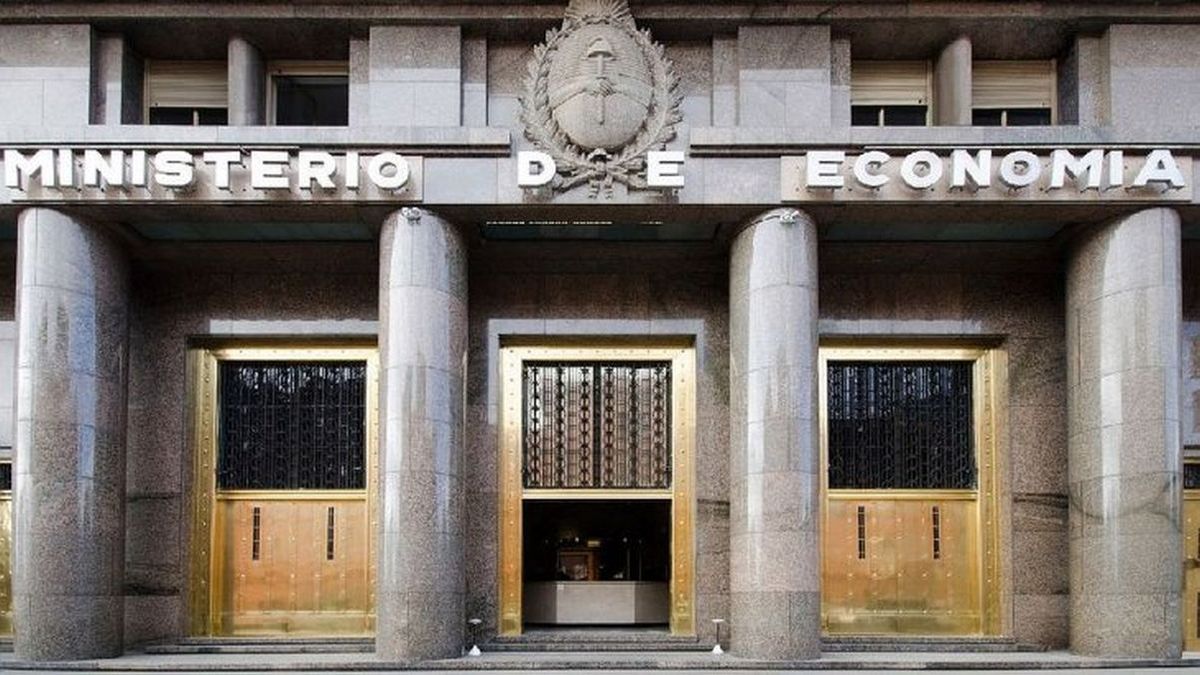After the debt exchange in pesos, the February inflation data and the lowering of the interest rate that the Central Bank applied last week, the Ministry of Economy announced a debt tender in pesos for this Thursdaywhich has as a novelty the return of a title widely used by Macrismo but that was stopped being placed since the “reprofile” of 2019. It is the National Treasury Bill Capitalizable in Pesos (LECAP), with which the team Luis Caputo will measure its chances of issuing non-indexed debt by 2025.
As confirmed Ambit with a high official source, for this placement The Central Bank will not offer puts, insurance for banks which he used to encourage the migration of financial entities’ holdings from BCRA repos to Treasury securities. While the market does the math to define the rate it will ask for in the auction, the Government’s choice of LECAP hides a particular zeal for the fiscal front.
In the placement this Thursday, according to different private calculations, the Ministry of Finance, which leads Pablo Quirnoyou will have to renew between $520,000 million and $540,000 million. It is the remainder that remained after last week’s exchange in which public organizations mainly entered. That’s why, almost all of the securities that expire in 2024 are now in the hands of private creditors. In principle, the official intention, if any surplus is achieved over maturities, is to resume the repurchase of Treasury bonds from the Central Bank.
Economy will put on the table three titles in this opportunity. There will be two tied bonds to inflation with zero coupons that expire in 2025, the BONCER TZX25 and the TG25, which is enabled for banks to cover it with reserve requirements. But the main novelty is the return of the LECAP: Caputo decided to offer a capitalizable bill maturing on January 31, 2025.
A high official source confirmed to this medium that, for this tender, the BCRA will not offer puts. The market was expectant regarding this point since in recent months they were decisive in supporting the level of subscription in Treasury placements.
The puts work as a kind of insurance for banks that guarantees that the monetary authority will buy back (with issuance) the securities when they want to get rid of them. It is the tool that the economic team used to encourage financial entities to dismantle part of their repos holdings and migrate to Treasury bonds. The strategy aimed to improve the Central Bank’s balance sheet, but was questioned since it implied the creation of a kind of “latent debt” for the BCRA that, in the event of a possible change in the market’s mood, could trigger a massive execution of the puts. and feed back the run.
In official offices, they argue that it will not be necessary to offer insurance on this occasion since the Treasury faces a maturity that “is not very large.” They explain that they are already doing some tenders that seek to send the signal that puts will be used when they consider that the conditions require it: “They are an instrument created to support market liquidity in case it is necessary and lately it is not very necessary.” sources say.
What are LECAP?
Widely used during the management of Nicolas Dujovnethen defaulted by Hernán Lacunza in 2019 and sidelong views by the IMF in recent times, LECAP returns after almost five years. This also implies the return to Treasury tenders for non-indexed instruments: in December, a Discount Bill (LEDES) was offered for the last time.
The selected menu shows that the Treasury Palace, after the exchange that extended maturities to an average of three years, prioritized this opportunity explore the possibilities of returning to a fixed rate instead of continuing to extend duration.
luis caputo
Caputo decided to offer a capitalizable bill maturing on January 31, 2025.
Reuters
The strategy responds, in part, to the request that the Fund formulated in its last Staff Report: first replace the placements tied to the official exchange rate with inflation-adjustable debt and then begin to migrate towards fixed rate securities, with the idea of starting to deindex.
Operators consider that Economy will try to take advantage of the lower interest rate of the Central Bank and the slowdown in inflation expectations reflected by the latest Market Expectations Survey (REM) of the monetary authority. Although it remains to be seen what performance investors demand to move away from the “BCRA risk” or not to rely on indexed options.
The LECAP will be tendered at par and by indication of the monthly effective rate (TEM). The cut-off rate accepted by the Treasury Palace will be the one accrued monthly until maturity. The peculiarity of this type of instrument is that Interest is capitalized month by month and is only paid when the bill expires. along with the invested capital.
These characteristics, different from those of the classic LEDES (whose rate is defined as a discount, due to the difference in the placement price with respect to the nominal value), led to The Fund will look askance at the LECAP in recent years. As Ámbito learned, in the conversations with Martín Guzmán’s team within the framework of the 2022 agreement, the Washington technicians saw them as a “exotic” instrument due to its atypical structure for capital markets.
What does the market expect?
All in all, analysts do the math and try to calculate the performance they could have. The consulting firm 1816 indicated as an approximate rate reference for the LECAP that, assuming that the inflation projected by the last REM is realized, the BONCER T2X5 (which expires on February 14, two weeks later) yields the equivalent of a TEM of 7, 1%. And he stated that the market probably demands a “premium” regarding that figure.
Portfolio Personal Inversiones (PPI) estimated, based on the same parameters and also the price of the T5X4 bond (which matures on December 13, 2024), that “if investors ask for a premium with respect to the current CER curve, the TEM will bidding should be slightly above 7%.”
On his X account (former Twitter), Ariel Sbdar, founder of Cocos Capital, said: “I see a lot of demand for tomorrow’s Treasury tender. Particularly in the new LECAPs. “The monthly rate is probably more in the 6.5% area.”
The LECAP and the eye on fiscal adjustment
From the Government’s point of view, there is another reason to return to the LECAP to the detriment of LEDS. They work as an accounting crutch to complement the adjustment via chainsaw and blender (mainly in retirements and other sensitive items) facing the objective of zero financial deficit. Because?
Sources with extensive experience in the administration of public accounts explained to Ámbito that both the interests accrued from the LECAP and the LEDES are accounted for in the Integrated Financial Information System on a monthly basis. But in the former, they are capitalized and only paid at maturity, so they do not impact cash flow until that moment. That is, it is indistinct for the “accrued” fiscal result, but not for the “cash basis”, which is what is published by the Ministry of Finance and monitored by the IMF. As in this case the LECAP expires in January 2025, it will not affect fiscal year 2024 and the impact on the financial account is carried over to next year.
Source: Ambito




